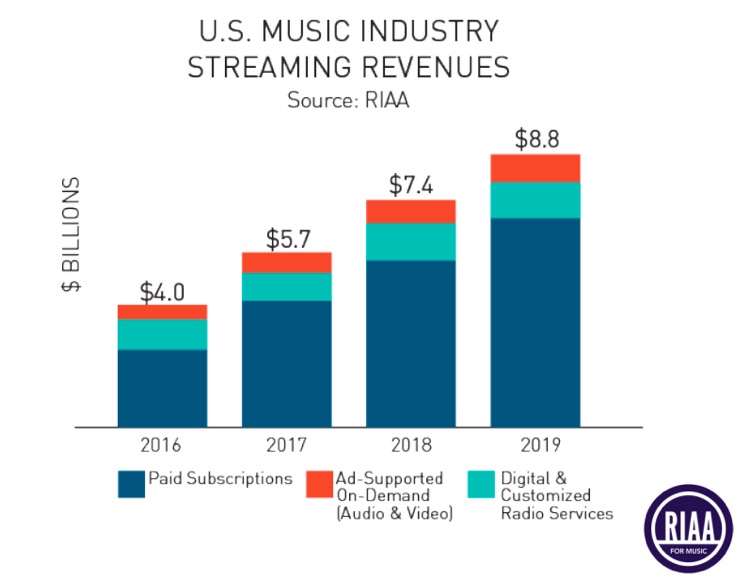Since 1973, when the RIAA (Recording Industry Association of America) began tracking sales data, the music industry enjoyed 26 consecutive years of annual revenue increase in music sales. In the 70’s, EPs and LPs lead the charge. In the early 80’s we saw cassette tapes briefly take the lead until the CD quickly took over through the late 80s and 90s. From 1973 to 1999 we saw U.S. music sales climb from 2 billion to 14 billion dollars.

From 1999 to 2000 we saw revenues contract for the first time by nearly 300 million dollars. It was a sign of things to come. The industry was not prepared to go online. Unlike the film industry, it had no plan on how to adapt to online technology nor a vision for the future. Albums and singles were download and shared with impunity. Websites like Napster and Bit Torrent were the early pioneers who helped facilitate the theft of intellectual property of artists around the world. As a result, for the next 15 years we witnessed U.S. sales revenue drop by nearly 60% to roughly 6.7 billion dollars.
And now, for the first time since the mid 90s, the music industry has enjoyed a music sales revenue increase for 5 consecutive years. In 2015 sales went from 6.7 billion to 11.1 billion in 2019. A steady increase each year.
It is critically important for every musician, producer and engineer to understand the trends in music sales, to understand the platform where their music will be heard and distributed, to understand where the profit centers are. I believe the last 5 years are a clear sign that paid streaming services are here to stay. I also believe that vinyl sales will continue to gain traction. Below is a chart that I recommend to all. It is maintained by the RIAA and it details all U.S. music revenue by the format it is sold.


Comments are closed.